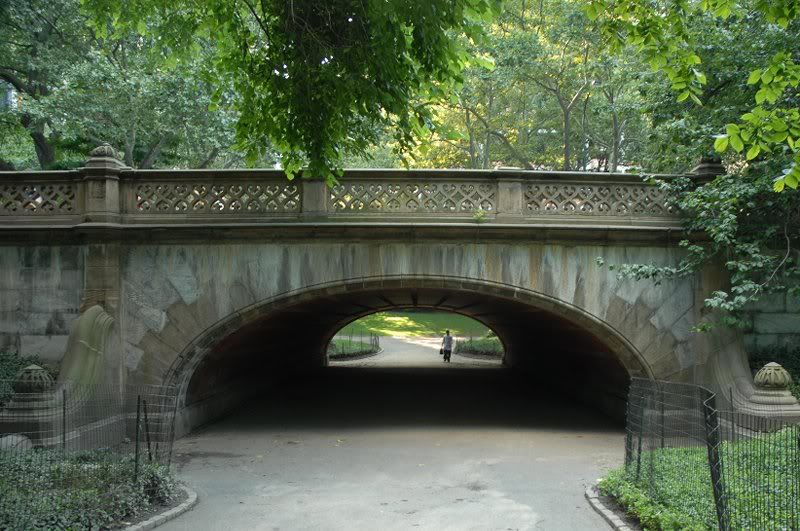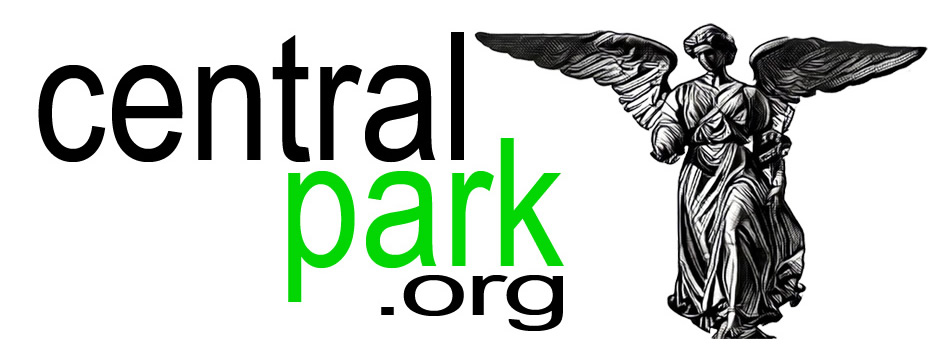Greyshot Arch
Greyshot Arch is located a short distance from Columbus Circle’s “Merchants Gate,” just inside the park on Central Park West between 61st and 62nd Streets.
When work began on the park grounds in the late 1850s, three areas became the focus of construction efforts: Fifth Avenue at 59th Street, the center of the park south of Vista Rock where the Belvedere stands, and the southwest corner at Eighth Avenue and 59th Street.
Carriage roads were laid out with their archways soon after the grading was completed. Most of Greyshot Arch was constructed in 1860. It is like Green Gap Arch, an early design by Calvert Vaux. The arch was in use by 1862, and the 100-foot-long sandstone balustrade was set in place a year later. Part of the balustrade is carved with stylized fleur-de-lis. Buttresses flank the archway, rising from curved supports to posts that have round tops in imitation of a modified boss with a diamond point. Modified bosses hod down the supports.
The fountain in Columbus Circle can be seen from the center of the 80-foot-wide bridge carrying the park drive. Those sitting on a bench north of the pedestrian archway on a springtime Sunday will enjoy an uneding parade of bikers, joggers and skaters, for this is one of Central Park’s most heavily-trafficked areas.
Greyshot Arch is faced with ornamental Westchester County variegated gneiss, a whitish-gray stone with veins of dark orange. It provides a contrast to the muted, earthy New Brunswick sandstone molding of the elliptical arch and balustrading above.
The vaulted archway is lined with Philadelphia red brick and has a 30-foot, 6-inch-wide and 10-foot, 1-inch-high opening. Greyshot has a passage 80 feet long. Like many of the park’s archways, going beneath after a springtime rain takes on the characteristics of a safari through a shallow swamp, as pedestrians without hiking boots tiptoe in reservoirs of mud. Checking erosion of the slopes on the sides of the arch is part of continuing maintenance, much as is removing mud after a storm.
There are nineteen drawings of this arch in the Municipal Archives. As with many park archways, it should be seen from the walkway on either side to get the full impact of its beauty and design.



